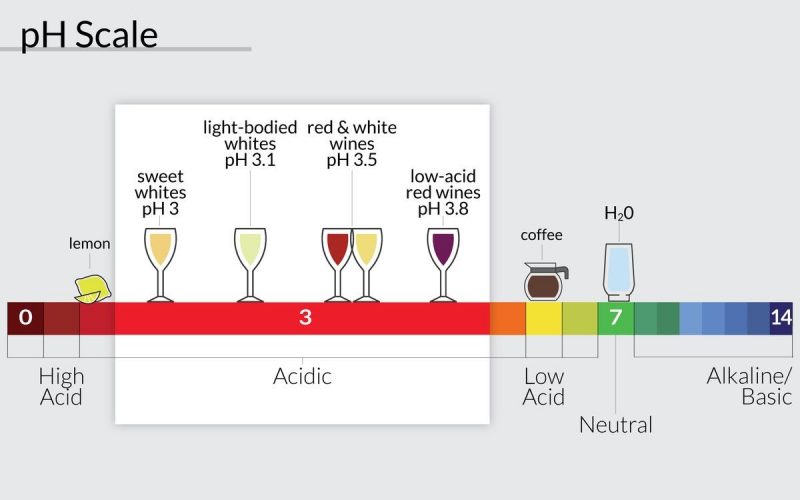Acidity is one of the key elements of a good wine, not only in sparkling and white wines, although it is perhaps more identifiable in the latter, but also in reds, because without it, many wines become flat, lacking sparkle and emotion. This important nuance often goes unnoticed, so it is worth remembering that the sensation of freshness of what we are drinking, and which encourages us to continue drinking, comes precisely from this important factor.
By the very nature of the grape, acidity is inextricably linked to the wine, as the pulp of the berries is a notable source of acid. It fulfils several functions: on the one hand, it gives wines the aforementioned freshness and balance, on the other hand, it preserves them from bacteria and, finally, it facilitates their longevity.
The main acids we can find are: tartaric, lactic, malic and citric. The acidity depends on several factors: the grape variety, the vinification method and the climate.
Riesling, Albariño, Chardonnay, Grüner Veltliner, Chenin Blanc and Sauvignon Blanc are rich in acidity, as are Pinot Noir, Caiño and Nebbiolo in reds.
Acidity can also be regulated during vinification, both at the time of harvesting (early harvests favour it) and during winemaking (stems, skins and pips are also a source of acidity). Of course, this can be achieved artificially, by adding acids by hand, at the winemaker’s discretion, until the desired pH is reached. Needless to say, this is not the case with the terroir philosophy that I tend to reiterate on a regular basis.
Climatologically, cold areas favour acidity. Thus, Champagne, Chablis, or Moselle, as an example, facilitate acidity in wine, while warm areas, such as the Mediterranean, give rise to wines with lower acidity.
However, the acidity of a wine is given by the sum of all these parameters, as they all play an important role in giving the wine the freshness necessary for its enjoyment. I particularly appreciate acidity in all kinds of wines, but perhaps it is in sweet wines where I find the perfect balance, as a sweet wine without acidity can become excessively heavy, but with the right acidity, the wine can be splendid. The contrast between the sweet explosion and the acidity is sublime.
